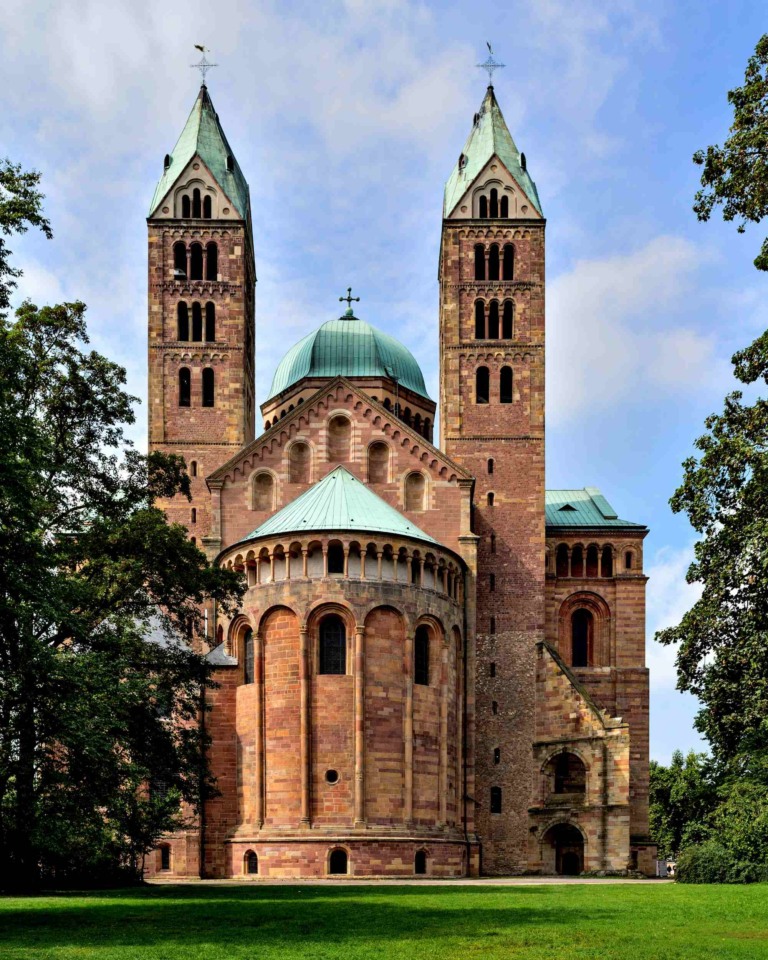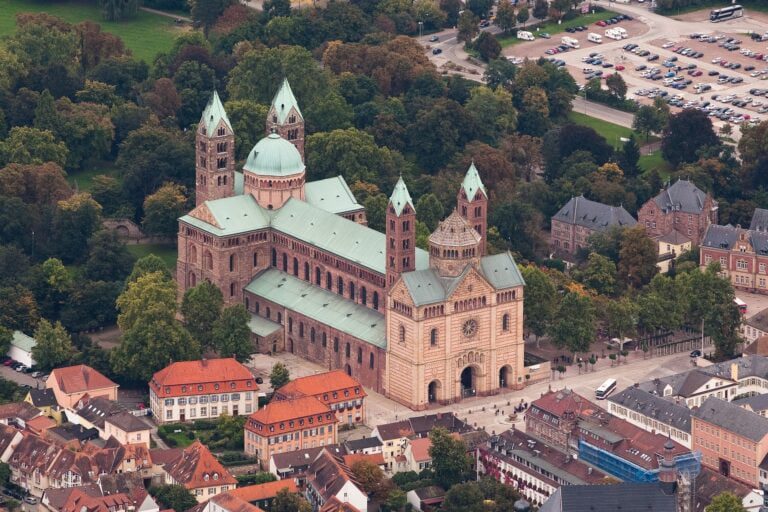
Aachen Cathedral, or Aachener Dom, stands as a historic Roman Catholic church with a storied past in Aachen, Germany. Its roots trace back to the era of Charlemagne, who commissioned the cathedral’s construction and was later interred there in 814. As one of Europe’s oldest churches, Aachen Cathedral played a pivotal role in the annals of the Holy Roman Empire. Over the course of history, the cathedral served as the hallowed ground for the coronations of thirty-one German kings and twelve queens. This tradition spanned from 936 to 1531, predominantly occurring in the Palatine Chapel. Notably, in 1978, Aachen Cathedral received the distinction of being among the inaugural twelve UNESCO World Heritage Sites. This esteemed recognition was conferred for its exceptional contribution to the history of the Holy Roman Empire and its architectural and artistic significance.

Speyer Cathedral, officially known as the Imperial Cathedral Basilica of the Assumption and St. Stephen, is one of the most significant examples of Romanesque architecture in Germany. The cathedral’s story begins with Konrad II, who, in the year 1030, transformed it into a basilica with a flat roof, a decision that would prove to be of great significance. In 1077, Henry IV struck a historic agreement with the Pope to rebuild the cathedral. This marked a pivotal moment in the cathedral’s history, as it became not only the first but also the largest church in Europe at the time. Its distinctive vaulted ceilings were a testament to the exceptional craftsmanship of the era. For nearly three centuries, Speyer Cathedral served as the final resting place for German kings and queens, making it a place of immense historical and cultural importance. Here is a brief history of Speyer Cathedral, along with some archaeological facts:

Germany is home to several World Heritage Sites, renowned for their cultural, historical, and natural significance. Germany’s heritage includes traces of ancient civilizations and tribes that inhabited the region, such as the Celts, Germanic tribes, and the Roman Empire, which had a significant presence in the area. The medieval period left a lasting impact on Germany’s heritage. It was characterized by the Holy Roman Empire, the rise of feudalism, and the construction of numerous castles, cathedrals, and cities that still stand today. The Hanseatic League, a powerful medieval trading network, also played a crucial role in shaping Germany’s economic and cultural heritage. Germany holds a special place in the history of the Protestant Reformation. The movement led by Martin Luther in the 16th century had a profound impact on religious and social developments in Europe. Here are some of the UNESCO World Heritage Sites in Germany. The country has many more fascinating sites that showcase its rich cultural and natural heritage.


